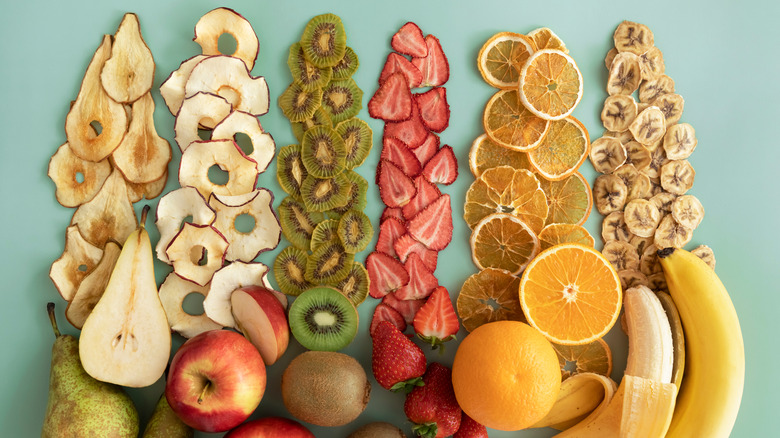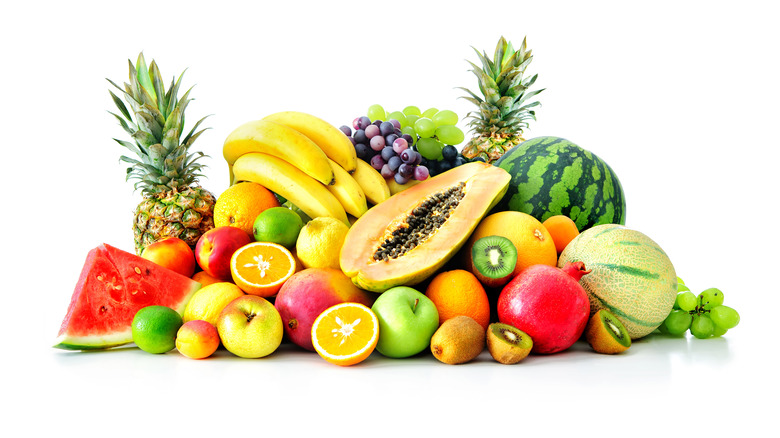Fruits To Cut Back On If You Have Diabetes
Diabetes is a common and chronic illness affecting millions of people worldwide. In the United States alone, approximately one in ten Americans have diabetes and roughly one in three individuals has been diagnosed with prediabetes (via the Centers for Disease Control and Prevention (CDC)). Diabetes is a condition in which either the body does not produce enough insulin (Type 1) or doesn't use insulin as well as it should (Type 2) (via the CDC). Insulin encourages the body to use sugar from the foods you eat as energy. This impairment leads to uncontrolled and irregular sugar levels within the body.
While there are several oral and injectable medications on the market which can be used in the management and treatment of diabetes, a mainstay to sustainable and long-term treatment remains to be dietary and lifestyle modifications. There are many different facets to a diabetic-friendly diet plan, including decreasing carbohydrate intake, decreasing added sugar, and increasing fruits and vegetables (via the American Diabetes Association). Fruits are generally considered very healthy and often recommended, but it is important to note that people with diabetes should avoid certain types of fruit, particularly dried fruit and those with a high glycemic index (via Very Well Health).
Dried fruits and fruit juices are high in sugar
One tool which can help people with diabetes navigate which foods to eat and which to stay away from is known as the glycemic index (GI). This index is essentially a ranked list of which foods can affect blood glucose levels more than others. Foods with a GI of 55 or below are considered "low-glycemic" and relatively safe, while those above 70 are considered "high-glycemic" foods."
While fruits like strawberries, blackberries, oranges, and grapefruit are typically recommended, fruits like watermelon, dates, overripened bananas, and pineapples are usually advised against (via Very Well Fit). Despite being delicious, dried fruit should also be avoided by people with diabetes. Due to the dehydration process, dried fruit actually contains more carbohydrates (which are converted into sugars in the body) than the fresh whole fruit. Another form to avoid includes fruit juices, which are high in sugar and low in fiber. Typically when eating a whole fruit, the fiber content helps to decrease the effects of the sugar it contains. In juice form however, a significant majority of the fiber is removed and blood glucose levels can spike within minutes.
Managing diabetes is much more intricate than a simple list of foods to eat and foods to avoid. Often times, it's not as important to cut certain foods out completely as it is to know when and how much to eat. Working with a registered dietician or nutritionist can be instrumental to long-term management of diabetes.


